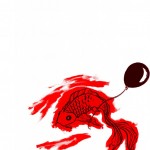“Mom, it’s kind of rude for a princess to say ‘Don’t know if I’m elated or gassy,’ right?”
“Mom, why does she love chocolate so much? It’s not very princessy.”
“Mom, why is Elsa so unkind to her sister? Why won’t she open the door and play with her?”
“Mom, why does it say ‘beware the frozen heart?’ ”
I took Rosie, my 5-year-old daughter, to see Frozen last month. I clutched her mittened hand as we crunched through the slushy parking lot toward the theater, unaware we were also heading toward an obsession. Since then, we’ve seen the movie again and kept the soundtrack spinning constantly, singing, dancing, and acting out the parts with Owen, my 2-year-old (who is every bit as in love with it as Rosie is).
I have to admit that I’m also as obsessed with the movie, so much so that I don’t even mind the repetitive questions I get. I’m thankful for every chance to talk about the themes of the movie with my daughter, because I think it could help her avoid a set of lies that I believed for far too long myself. Lies like these: Polite women don’t talk about their bodies; they cover them or pretend they don’t exist. Self-control and modesty are the ultimate virtues for women. Emotions, passions, and love are dangerous and to be feared.
The movie tells the story of two sisters, princesses Elsa (Idina Menzel) and Anna (Kristin Bell). They are constant playmates until Elsa, who has a magical power to create snow and ice, accidentally strikes Anna with a bolt of frozen energy. Trolls from the nearby mountains heal Anna and remove her memories of Elsa’s magic, warning Elsa to use her powers carefully.
Rather than learning to steward her powers, Elsa shuts herself away in her room. Since feeling strong emotion can cause the magic to manifest, she represses every instinct and has little human contact, even with her sister.
Years later, it’s coronation day, and Elsa prepares to open the castle gates that have been shut for as long as anyone can remember. She sings “conceal / don’t feel / don’t let them see / be the good girl you always have to be.” But at the party Elsa loses control, freezing the entire kingdom, and she flees into the mountains.
As Elsa escapes into the snow, she finally gives up trying to be perfect, throwing away her gloves, experimenting with her powers. Yet in her self-imposed isolation, she can’t learn about love.
Anna pursues her sister, and eventually both of their lives are saved through an act of sacrificial love, causing Elsa to realize for the first time that love is the key to controlling her magical powers.
Like Elsa, I spent many years more interested in self-control than in passion — or, to borrow some church words, more interested in self-righteousness than in love. Tragically, neither the church nor culture helped me out much: both emphasized goodness over grace for girls.
From culture, I heard that boys didn’t like girls who were “emotional,” and that girls were ruled by their bodies, subject to irrational mood swings and PMS. Fine, I said: I won’t be emotional. I will always be rational, I will win all the arguments, and I will be in control. Needy? Weepy? Clingy? Not me. I turned my feelings off.
From the church youth group, I heard that my heart and my body should be kept under wraps. “True Love Waits” lessons cemented my suspicion that my body and my emotions were not to be trusted. My body was dangerous, and likely to cause boys to “stumble.” (Their bodies, on the other hand, were powder kegs, uncontrollable at the spark of my sleeveless shirt or too-short shorts.)
Our bodies were best covered up and ignored; that was our only chance of keeping them pure “temples” of the Holy Spirit. Girls were regularly admonished to guard our hearts, and — wrongly or rightly — I took that to mean that I should rein in my emotions, build a fence around my heart, and let no one cross.
Instead of being taught that true love casts out fear, I learned that love itself was to be feared.
Thankfully, I was discipled in my late teens by a woman who saw me for who I was. Instead of telling me to stay pure (not a lesson I needed to hear again), she taught me to seize the day, to listen to my passions. That’s where my journey back to my heart began.
Even so, as a young adult, I found myself begging God to let me figure out how to love Him with my heart instead of just my mind, begging Him to allow me to feel His love for me. I didn’t know how to feel. I didn’t know how to love. I knew how to be good, but that wasn’t enough.
At 5, my daughter shows the same deep desire to be good that I see in myself — a dangerous desire, if it leads us to rely on our own strength rather than to rest in the grace of God and the identity he’s given. So before I teach my daughter how to behave — how to be modest or self-controlled — I want to teach her about who she is. I want her to know that she’s made in the image of God and because of that, she’s made to be a lover.
I want her to know that emotions are a gift from God, just like reason is, and that emotions are not necessarily feminine (or masculine!) but human. I want her to know that while it might not be “princessy” to talk about feeling gassy, her body is a gift from God, and that it’s good to know your body and what’s going on with it.
Most of all, I want her to learn, earlier than Elsa and I learned, that building a life around being “good” and self-controlled will always fail. Even recognizing our inability to be good — as Elsa did when she finally embraced her identity as she fled to the mountains — is not enough to truly live. It’s only when we center our lives and our identities on Love that we are able, finally, to use our powers for good.
That’s what it means to beware the frozen heart.











